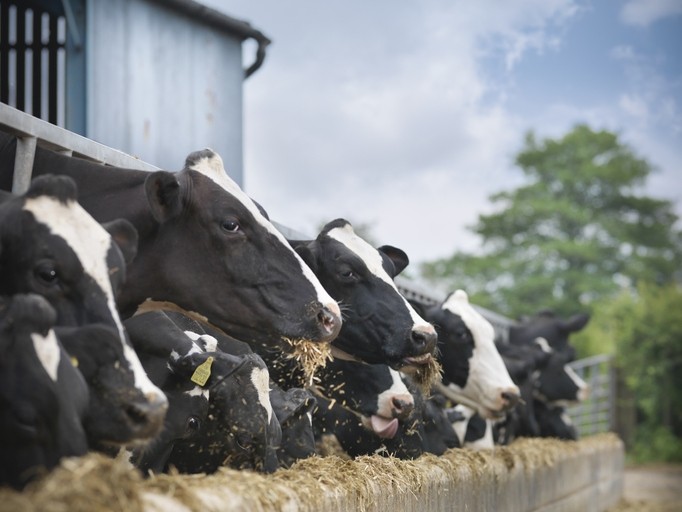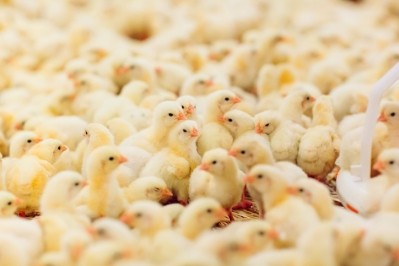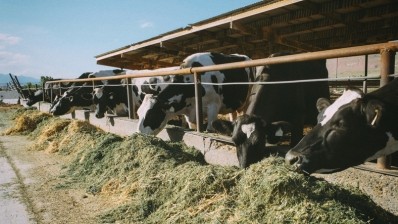‘To help battle heat stress, we recommend a whole farm approach’

“Stress is complicated. The dairy industry has identified many stress factors, but we often only focus on a small handful, and even then, the industry tends to address them individually,” said Chris Gwyn, Jefo North America ruminant business development manager.
“In reality, stressors can interact, and as farmers know, they can compound one another, negatively impacting cow health, performance, reproduction, longevity — and ultimately revenue. We call it the Jenga effect. Stressors are like the wooden blocks in that board game. When you stack stressors on top of one another, and you’re missing solutions to overcome them, the risk of losses magnifies. Specifically, those losses are poor reproductive performance, immune dysfunction, increased cull rates and mortality, and reduced milk production and component yield," he continued.
Heat stress
Zoning in on heat stress and how to tackle it, Gwyn noted that a dairy cow experiences stress when her heat load is greater than her capacity to dissipate heat. She often will adapt by modifying her metabolism to reduce heat expenditure. “To help battle heat stress, we recommend a whole farm approach, including management, feeding and precision nutrition strategies,” he said. “The goal is to maintain good health, feed intake and production levels, even when the Temperature-Humidity Index (THI) reaches 68 or higher.
“Farmers rely on heat abatement strategies, including the use of fans, misters and shade,” he explained. “It’s also important to increase clean water supplies and avoid overcrowding. In addition, farmers should deliver feed during the coolest time of the day, increase nutrient density of the ration, feed high-quality forages, and increase feeding frequency to avoid heating of the ration. And the third principal to the whole farm approach is a precision nutrition strategy. Research shows that a blend of rumen-protected B vitamins can help cows cope with heat stress. In short, supplying protected B vitamins improves the animal’s ability to more efficiently make energy and protein.”
Vitamin supplementation
Research shows it may be beneficial to increase the feeding rate of protected B vitamins - choline, riboflavin and folic acid - during hot weather, said the company.
“On a 1,200-cow commercial herd in Queretaro, Mexico, researchers evaluated the effect of feeding a higher rate (100g vs 50g) of the B vitamin blend on health, milk production and reproduction. The owner was already feeding the blend with good success but wanted to determine if a higher feeding rate would benefit his transition cows during hot weather.
"Results showed that the higher feeding rate reduced metritis by 33.1% and retained placentas by 41%. In addition, there was a 34.7% increase in the first service conception rate, a 22.4% increase in percentage of cows pregnant after two services, and milk yield was increased by 2 pounds at 10 days in milk (DIM) and 3.7 pounds at 30 DIM.”
In another heat-stress study, researchers evaluated the effect of rumen-protected B vitamins and choline supplementation on subclinical ketosis by measuring blood levels of beta hydroxy butyric acid (BHB):
“Data was collected from 701 cows on 20 farms in Mexico. First, to establish the prevalence of the metabolic disorder, results showed there was a 50% increase of subclinical ketosis during the hot season (cows calving between April 1 to September 30) versus the cool season (October 1 to March 31). Next, researchers measured subclinical ketosis during the hot season and determined that when transition cows were supplemented with the blend of rumen-protected B vitamins and choline, the prevalence rate was reduced by 55.3%.”
Metabolism rate
Stress also can occur during winter weather, said Gwyn.
Cows strive to maintain a constant core body temperature of about 101 degrees Fahrenheit (38.33 degrees Celsius). When a cow’s temperature drops too low, she has to expend extra energy to stay warm. To remain productive, animals need protection from extreme cold and excessive snow, rain and dampness, he said. Other strategies to combat weather-related stressors include good year-round air quality and proper lighting, as a lack of light can slow down metabolism and lead to less productivity, added the specialist.













